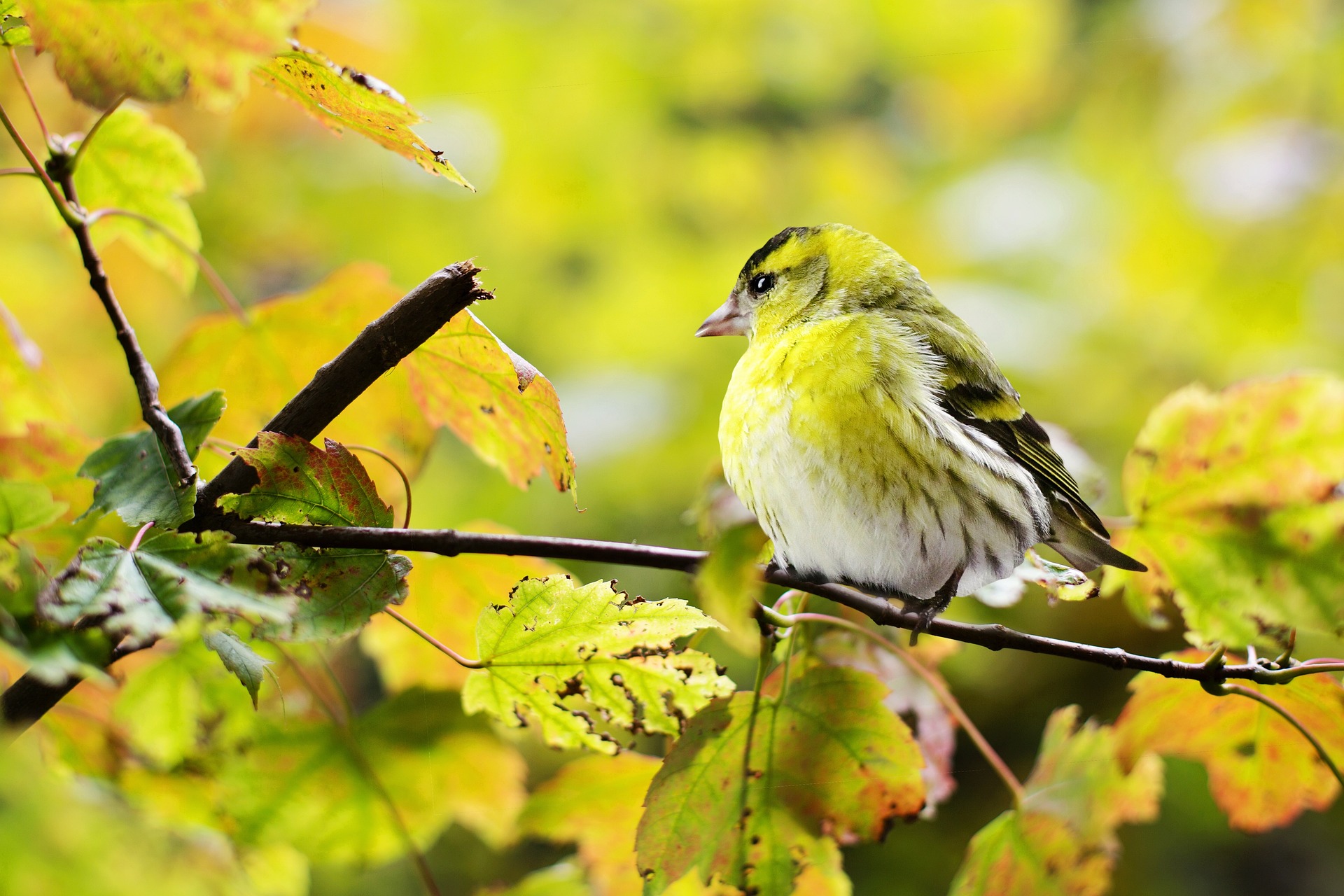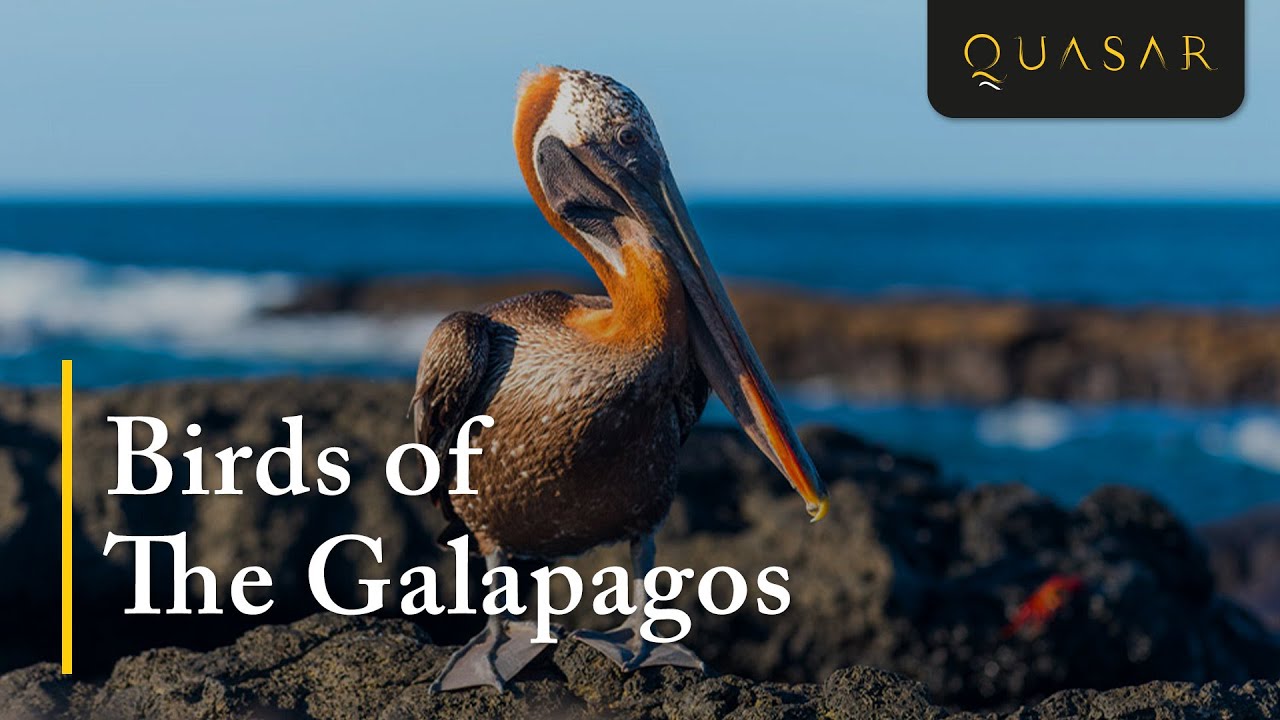Birdwatching In The Galapagos Islands - The World's Most Unique Avian Experience
For bird enthusiasts, the Galapagos offer an unparalleled opportunity to observe and learn about a wide range of bird species in their natural habitat. Let's explore what makes birdwatching in the Galapagos Islands such a unique experience, and share some tips for making the most of your trip.
Author:Jane RestureApr 03, 202318.8K Shares255K Views

The Galapagos Islands are one of the world's most unique and biodiverse ecosystems. Located off the coast of Ecuador, these islands are home to a staggering variety of plant and animal species found nowhere else on earth.
Among the most fascinating of these are the islands' diverse avian inhabitants, which have evolved in isolation over millions of years.
For bird enthusiasts, the Galapagos offer an unparalleled opportunity to observe and learn about a wide range of bird species in their natural habitat.
Let's explore what makes birdwatching in the Galapagos Islandssuch a unique experience, and share some tips for making the most of your trip.
Why The Galapagos Is A Birdwatcher's Paradise
The Galapagos Islands are home to over 50 resident bird species, including many that are endemic to the islands. These birds have evolved in isolation, developing unique traits and behaviors that are fascinating to observe.
One of the most iconic birds of the Galapagos is the blue-footed booby. These birds are known for their striking bright blue feet, which they use in courtship displays. Visitors to the islands can observe these birds performing their distinctive mating dance, in which they strut, whistle, and lift their feet in a display of courtship.
Other notable bird species found on the Galapagos include the Galapagos penguin, the only penguin species found north of the equator, and the waved albatross, which has the longest wingspan of any bird in the Galapagos.
Things To Bring For Birdwatching In The Galapagos Islands
When preparing for a birdwatching trip to the Galapagos, it's important to pack appropriate clothing and gear. Some essential items to bring include:
- Comfortable, sturdy shoes for walking and hiking.
- Lightweight, breathable clothing that can be layered for changing weather conditions.
- Sunscreen, a hat, and sunglasses protect against the strong equatorial sun.
- Binoculars and a field guide to help you identify bird species.
Are There Any Birdwatching Restrictions Or Guidelines In The Galapagos?
To ensure the protection of the Galapagos' unique bird species and their habitats, visitors are required to follow certain guidelines and restrictions when birdwatching. Some of these guidelines include:
- Staying on designated trails and avoiding disturbing bird nests or breeding areas.
- Keeping a safe distance from birds and avoiding making loud noises or sudden movements.
- Packing out all trash and not leaving any food or other items behind could attract predators or harm the birds.
By following these guidelines and practicing responsible birdwatching, visitors can help ensure that the Galapagos' unique bird species continue to thrive for generations to come.

Galapagos Birds: Watch Birds Of The Galapagos Islands with Quasar
9 Best Places For Birdwatching In The Galapagos Islands
While the entire Galapagos archipelago is home to a diverse range of bird species, there are several key locations that are particularly well-suited for birdwatching.
1. Genovesa Island
Genovesa Island, also known as Tower Island, is a popular destination for birdwatchers. This remote island is home to a wide variety of seabirds, including red-footed boobies, Nazca boobies, and frigatebirds. Visitors can also observe Darwin's finches and Galapagos mockingbirds on the island.
2. Isabela Island
Isabela Island is the largest island in the Galapagos and is home to several bird species, including the Galapagos penguin and the flightless cormorant. Visitors can also observe blue-footed boobies, pelicans, and Galapagos hawks on the island.
3. Santa Cruz Island
Santa Cruz Island is a popular destination for birdwatchers due to its proximity to the Charles Darwin Research Station, which is home to several bird species that have been reintroduced to the island. Visitors can observe Darwin's finches, Galapagos mockingbirds, and lava gulls on the island.
4. Española Island
Española Island is a remote island that is home to several unique bird species, including the waved albatross and the Nazca booby. Visitors can also observe Galapagos hawks, swallow-tailed gulls, and blue-footed boobies on the island.
5. Floreana Island
Floreana Island is known for its diverse birdlife, including the Galapagos flamingo, Darwin's finches, and the Floreana mockingbird, which is found nowhere else in the world. Visitors can also observe blue-footed boobies, pelicans, and Galapagos hawks on the island.
6. North Seymour Island
North Seymour Island is a popular destination for birdwatchers due to its abundant wildlife. Visitors can observe blue-footed boobies, frigatebirds, and swallow-tailed gulls on the island, as well as land iguanas and sea lions.
7. Bartolome Island
Bartolome Island is a volcanic island that is home to several unique bird species, including the Galapagos penguin and the lava heron. Visitors can also observe Galapagos hawks, blue-footed boobies, and frigatebirds on the island.
8. Santiago Island
Santiago Island is a popular destination for birdwatchers due to its diverse birdlife, including Darwin's finches, Galapagos hawks, and Galapagos doves. Visitors can also observe lava herons, yellow-crowned night herons, and American oystercatchers on the island.
9. Daphne Island
Daphne Island is a small, uninhabited island that is known for its diverse birdlife. Visitors can observe several species of finches, as well as blue-footed boobies, frigatebirds, and swallow-tailed gulls on the island.
How Can I Support Conservation Efforts For Galapagos Birds?
Conservation efforts are essential for protecting the unique bird species of the Galapagos Islands. Here are some ways you can support conservation efforts for Galapagos birds:
1. Support Local Conservation Organizations
Several local organizations are dedicated to conserving the unique wildlife of the Galapagos Islands. Supporting these organizations financially or through volunteering is an excellent way to contribute to conservation efforts.
2. Choose Sustainable Tourism Operators
When planning your trip to the Galapagos Islands, choose sustainable tourism operators that prioritize responsible and environmentally-friendly practices. These operators can help reduce the impact of tourism on the islands' delicate ecosystems and wildlife.
3. Follow Responsible Wildlife Viewing Guidelines
Following responsible wildlife, viewing guidelines is essential for minimizing the impact of tourism on the Galapagos Islands' bird species. These guidelines include maintaining a safe distance from wildlife, avoiding disturbing nesting sites, and not feeding or touching the animals.
4. Reduce Your Carbon Footprint
Reducing your carbon footprint can help mitigate the effects of climate change on the Galapagos Islands' bird species. Consider offsetting your travelemissions, reducing your energy consumption, and choosing environmentally-friendly transportation options.
5. Educate Others About Galapagos Bird Conservation
Raising awareness about the importance of conserving the Galapagos Islands' bird species is crucial for generating support and encouraging others to take action. Educate others about the unique bird species of the Galapagos Islands and the importance of conservation efforts.
By supporting conservation organizations, choosing sustainable tourism operators, following responsible wildlife viewing guidelines, reducing your carbon footprint, and raising awareness about Galapagos bird conservation, you can make a meaningful difference in protecting the islands' unique wildlife.
People Also Ask
What Other Animals Can I See While Birdwatching In The Galapagos?
The Galapagos Islands are home to a wide range of animal species, including giant tortoises, marine iguanas, sea lions, and more. While birdwatching, you may also have the opportunity to observe these other fascinating creatures.
Do I Need A Guide To Go Birdwatching In The Galapagos?
While it's possible to explore the islands on your own, hiring a guide can greatly enhance your birdwatching experience.
A knowledgeable guide can help you identify bird species, provide insight into their behavior and ecology, and ensure that you are following responsible and sustainable tourism practices.
What Is The Most Popular Bird Species To Observe In The Galapagos?
One of the most popular bird species to observe in the Galapagos is the blue-footed booby. These distinctive birds are known for their bright blue feet and playful courtship displays.
Visitors to the Galapagos can observe these birds diving into the water to catch fish, as well as performing their unique dance during courtship displays.
Conclusion
Birdwatching in the Galapagos Islands is a truly unique and unforgettable experience. With a wide range of bird species found nowhere else on earth, the Galapagos offer bird enthusiasts the opportunity to observe and learn about some of the world's most fascinating avian inhabitants.
Whether you're interested in observing unique courtship displays, rare and endemic species, or migratory birds, the Galapagos Islands are sure to provide a birdwatching experience like no other.
Jump to
Why The Galapagos Is A Birdwatcher's Paradise
Things To Bring For Birdwatching In The Galapagos Islands
Are There Any Birdwatching Restrictions Or Guidelines In The Galapagos?
9 Best Places For Birdwatching In The Galapagos Islands
How Can I Support Conservation Efforts For Galapagos Birds?
People Also Ask
Conclusion

Jane Resture
Author
Since she embarked on her first world trip in 2002, Jane Resture spent the past decades sharing her personal journey and travel tips with people around the world. She has traveled to over 80 countries and territories, where she experienced other cultures, wildlife she had only read about in books, new foods, new people, and new amazing experiences.
Jane believes that travel is for everyone and it helps us learn about ourselves and the world around us. Her goal is to help more people from more backgrounds experience the joy of exploration because she trusts that travel opens the door to the greatest, most unforgettable experiences life can offer and this builds a kinder, more inclusive, more open-minded world.
Latest Articles
Popular Articles